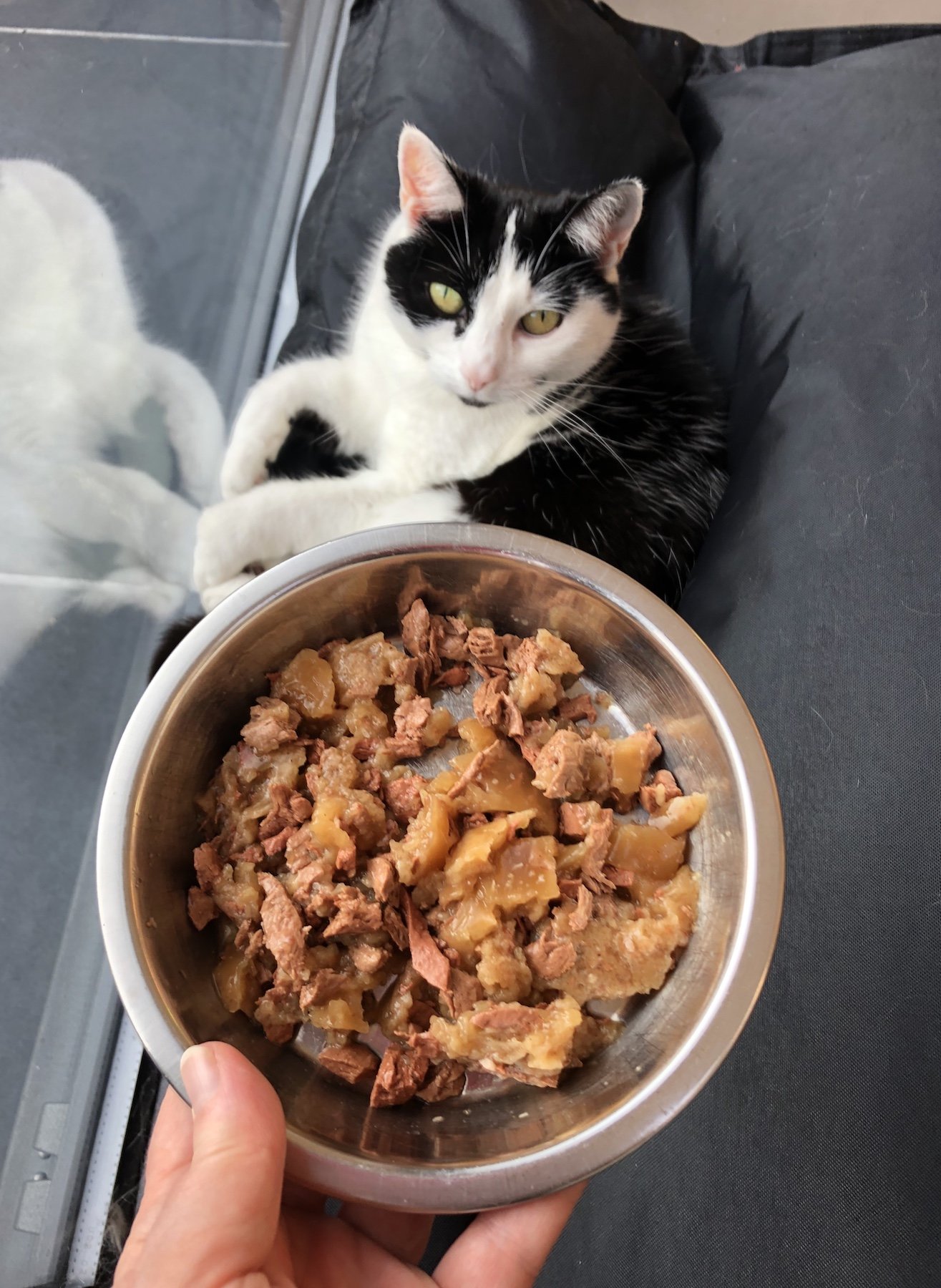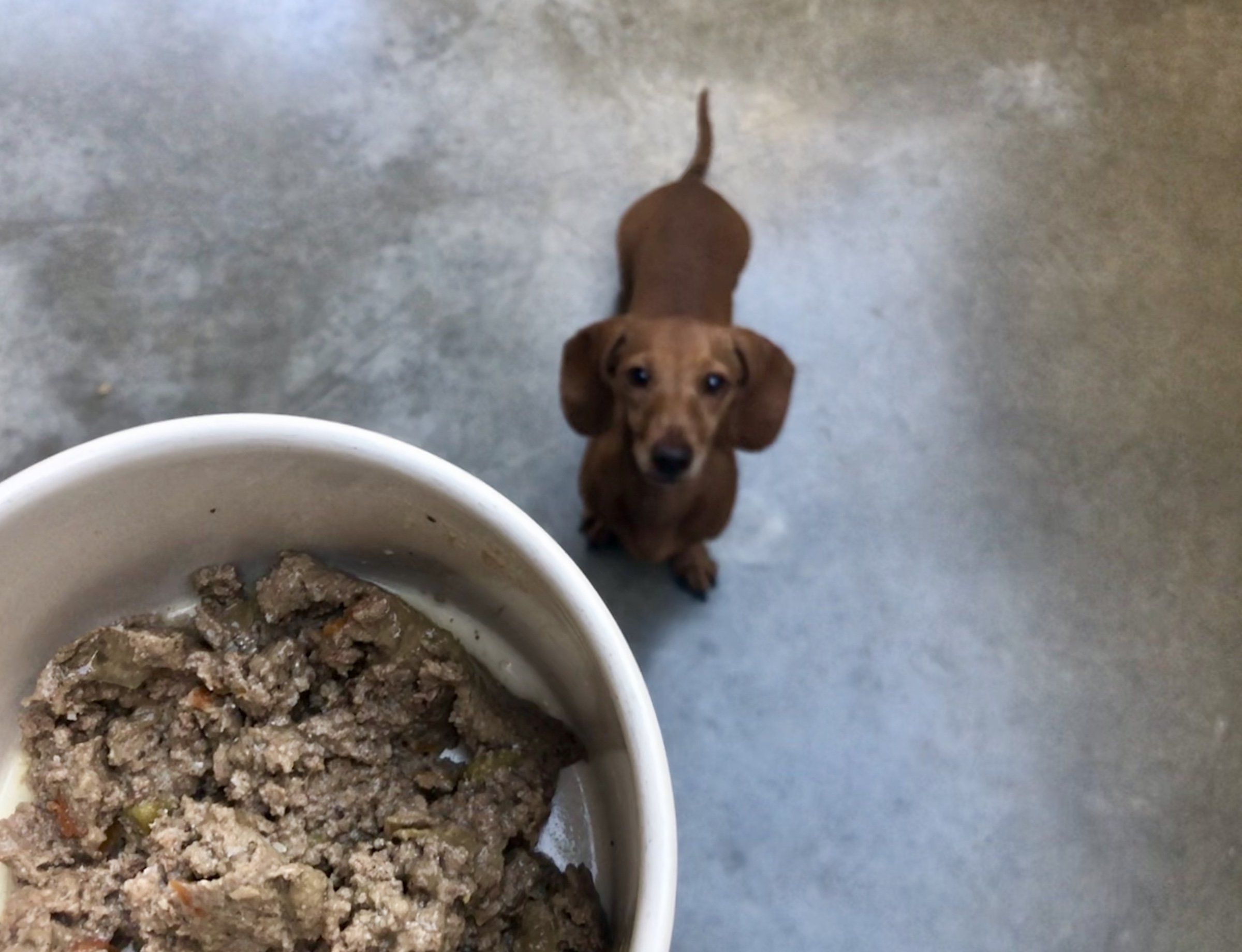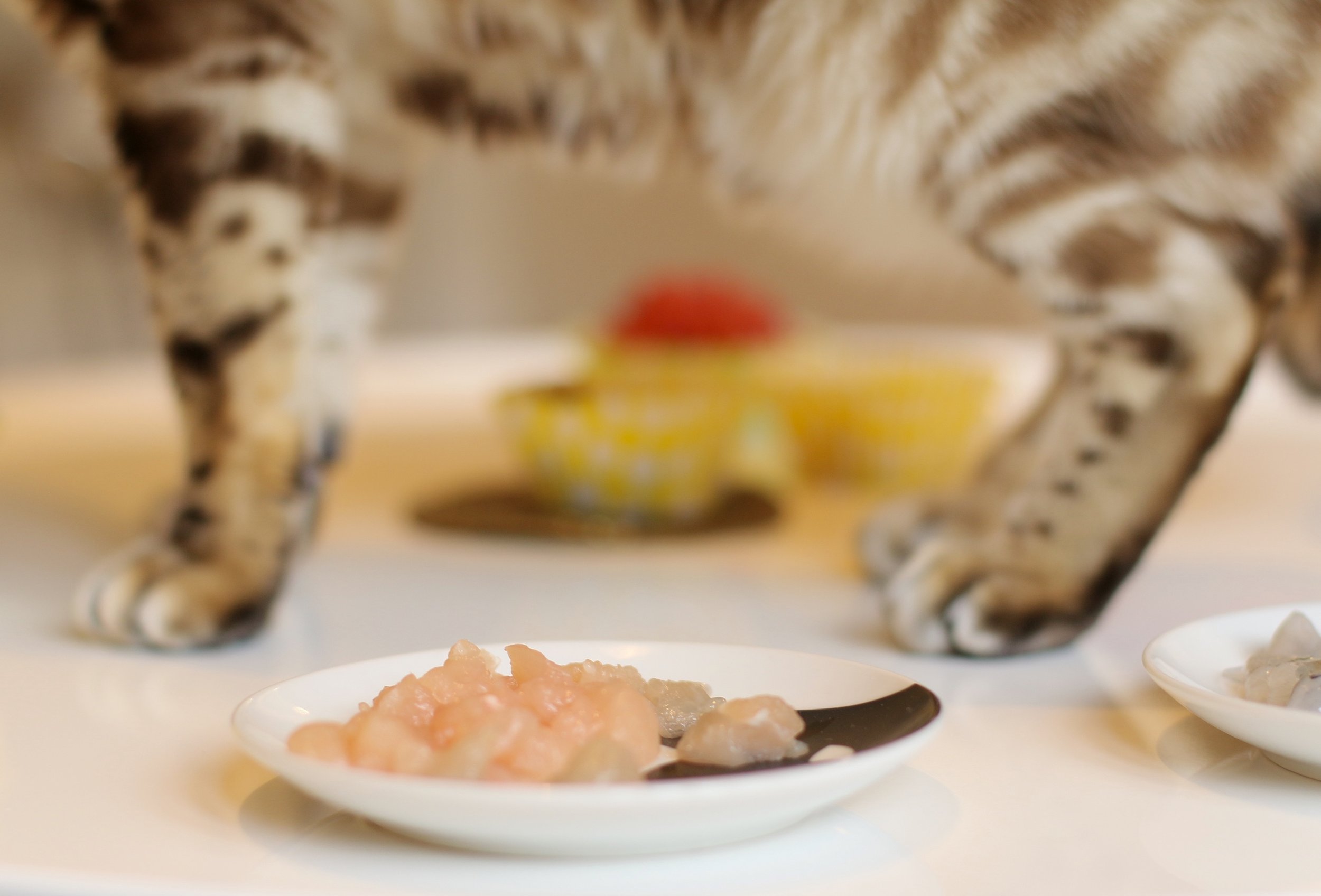Dishing the dirt on pet bowls
Our pet bowls provide the purrfect environment for bacteria to thrive. But more hygienic bowl choices and a few simple tweaks to your cleaning routine can help banish harmful bacteria for good.
Would you eat or drink from tableware that hadn’t been washed for a week, a month or maybe even longer? Nope, neither would I.
So why do we think it's okay for our pets? And why aren't we more concerned about the potential dangers to ourselves?
In UK households, most of us are preparing food and feeding pets in our kitchens. Perhaps there's a quiet assumption that common sense will prevail when it comes to home hygiene. But unless you're a raw feeder, there's not a lot of precautionary advice to be found.
Come to think of it, in all the years I’ve been visiting vet clinics, I’ve never had a conversation about pet bowls and hygiene. To be fair, I haven’t asked but my point is, there doesn’t seem to be proactive support on the subject. And perhaps there should be…
In 2022, 62% of households in the UK owned a pet compared with 47% in 2012. No surprises there. Pet ownership spiked during the pandemic when all of us were spending more time at home.
Sixty per cent of the pathogens we encounter are considered zoonotic (disease that spreads between animals and humans) and as we are now living so closely with our animal friends, surely we need to be better informed about the risks of bacterial transmission between pets and their people.
In 2017, I opened a pet sitting business. During the course of my training, volunteering, healing work and countless pet care visits, I've looked after animals in a variety of settings. And when it comes to pet bowls, I've seen the good, the bad and the very, very ugly.
If we want to protect the health of our families - including those covered in fur - it seems that we should be looking more carefully at how clean our pet bowls really are and whether the material they’re made from is perhaps more prone to contamination.
Findings from a recent study undertaken by the Food and Drug Association (FDA) in the United States indicate that from a sample group of 417 dog owners, only 12% washed their pet bowls daily. A further 22% washed bowls weekly and 18% washed bowls only once every 3 months or unbelievably, not at all. Did anyone ever ask Elvis why that hound dog was crying? Now we know!
According to various published studies, our pet bowls consistently rank in the top four most highly-contaminated household items. Kitchen sponges and dish cloths are ranked number one. Obviously, it makes no sense whatsoever to wash a contaminated pet bowl with an even more contaminated dish cloth. But it’s very likely that many of us are doing it.
Bacteria growing inside bowls transfers to your pet’s food and water. It also transfers to humans when we handle the bowls. We then transfer bacteria to other household surfaces. After the last couple of years, we all know how this goes…
Clearly there are worrying implications for our pets and for us.
What exactly is lurking inside those bowls?
Limescale
An accumulation of hard water deposits, most commonly on the inside of water bowls. It occurs because we tend to top-up instead of washing bowls daily before refilling with fresh water.
There are mixed views about how dangerous limescale is to our pets and perhaps that’s a subject for another blog post. But where there’s limescale, there’s bacteria followed by biofilm. So, if your pet's bowl shows a build-up of limescale, it’s simply not being cleaned often or thoroughly enough.
Bacteria
Where we find nutrients, moisture and optimum temperatures, we find perfect conditions for the growth of common bacteria. Rather scarily, it multiplies every 15-30 minutes!
Ideally, our pets would eat everything within 20 minutes and bowls would be washed soon after. But for many of us with grazers, fussy eaters, invalid pets or for busy pet owners who literally run out the door to work, that’s pure fantasy.
Pet bowls can be left for many hours. With each passing hour, bowls become a breeding ground for many strains of bacteria, some more serious than others such as Salmonella and E. coli which can cause your pets and you to become very ill.
Serious complications can occur when children, pregnant women, elderly people or those with compromised immune systems become infected.
Bacterial biofilm
The slimy stuff in your pet’s bowl is called biofilm. It’s a collection of different bacteria types that, in a moist environment, attach to the surface of your pet bowls releasing a slippery, gloopy coating.
It can cause severe infection contributing to periodontal disease (in the UK, the most commonly diagnosed disorder in cats), cardiovascular, urinary, renal and inflammatory conditions. It also affects humans with a long list of ailments from sinus infections to inflammatory responses.
Biofilm is usually clear but as the bacteria grows, the structure and colour can also change. The odour can be nasty especially for our pets. Cats and dogs have a highly sensitive olfactory system. To give you some idea, a cat's sense of smell is about 14 times more powerful than ours so if you're wondering why Fluffy isn't drinking much - and hydration is so important for cats - the solution could be very simple. Clean Fluffy’s bowl and fill it with fresh water. Daily.
There are so many health benefits for all of us by providing what is actually rather basic care. The type of bowls we use can also make a difference…
Choosing the right bowl for your pet
With so many options available on the high street and online, we are spoiled for choice but ultimately, the type of bowl you choose should be what's best for your pet and of course, what you can afford.
Your pet really doesn't care if his bowl is jewel-encrusted, matches your Scandi-style decor or whether it comes from Alessi or Amazon. We care about that stuff.
All our pets need is nutritious food and fresh water served in clean, hygienic bowls that are comfortable for them to use.
If your chosen bowl causes discomfort through inappropriate design or poor quality materials and you’re not picking up on your pet’s body language or changed behaviour, it’s possible that mealtime may not be as enjoyable or satisfying as we assume it is.
Do consider the shape and size of your bowl and how easily your pet can access their food. Would they benefit from an elevated style because of mobility issues or injury? Something to aid digestion like a slow-feeder? Perhaps a food dispenser is appropriate given your own work commitments and lifestyle? Or in the case of cats struggling with deep and narrow bowls (major pet peeve), a wider, more shallow option that allows them to eat without restriction, avoid whisker stress and reach every last morsel is very probably going to make them much happier.
Take some time to observe your pet while eating. Without voice, they provide us with so many clues when we really tune in to what’s going on.
If you’re unsure, talk to your vet or a behaviourist. Another great option is to ask a vet nurse at your surgery. These ladies and gents are so knowledgeable and have loads of practical advice for pet owners.
Do materials matter?
It’s recommended that our pets have a clean bowl for each meal so why not have a few spares ready to go? Here’s a short guide to the most popular options and why some are smarter choices than others.
Stainless steel
Durable, scratchproof, hygienic and by far the easiest to keep clean as the material is non-porous. Usually very affordable and long-lasting. Hand wash or pop them in the dishwasher on a hot wash cycle and they'll shine like new every time. If you choose a free-standing option, consider buying a bowl with a rubber or silicone base to avoid sliding from one end of the kitchen floor to the other.
Make sure you buy a recommended grade of steel used specifically for food preparation. These will be safer for your pet and rust-resistant.
Think twice about buying stainless steel bowls with enamel and other coatings or glazes. They can look very pretty but can also be toxic. Over time, they tend to chip and peel, providing a perfect home for bacteria. The loose fragments can also be ingested by your pet.
Eco bowls
If you’re interested in reducing your pet’s environmental impact, you may want to consider bamboo or other eco-friendly materials like natural rubber and silicone (although chewing pups should be closely monitored).
Hand washable, they can also be cleaned on the top shelf of your dishwasher but at a lower temperature than you’d select for stainless steel.
Check out Beco Pets, a very impressive outfit with great eco credentials.
Ceramic
A popular choice as they’re often very attractive and come in a wide range of colours. They’re sturdy and less likely to tip over… unless Fluffy is more poltergeist than pet at mealtimes!
Overall, a good option when safely produced. Glazes may contain highly toxic substances such as lead and cadmium which can transfer to food and water. Do your homework. Check that your manufacturer is reputable and uses best-quality materials.
It’s a durable material but beware of cracks, splits and chips occurring over time. These provide a safe haven for bacteria and can also irritate your pet’s tongue. So too can the gritty textures of some ceramic surfaces.
Before buying, touch the surface and try to imagine how it would feel against your own tongue at each meal time. If you know it would bother you, chances are it will bother your pet.
Because of their heavier weight, ceramics are a good choice for outdoor use. But the external environment attracts many additional contaminants including faecal matter from other species.
In 2018, a small study at Hartpury University explored the bacterial load in various types of dog bowls over a 14 day period. While the ceramic bowls had the lowest bacterial load, more harmful bacteria was identified on the ceramic surface than in plastic or stainless steel bowls, strongly suggesting that the type of material we choose can have an impact on the level and strain of bacteria in our homes.
So, keep your ceramic bowl squeaky-clean and monitor regularly for any imperfections. If damaged, send it to pet bowl heaven.
In the UK, Mason Cash is my first stop for pet ceramics. The glazes are lead free, they’re chip resistant and will last for years. They come in a variety of designs, colours and sizes.
Plastic
Usually very affordable but many plastics contain harmful chemicals which transfer to food and then to our pets. If you are choosing from plastic options, please check that they are BPA free.
It is the most easily contaminated of all the surfaces and tends to retain bacteria in fine scratches and cracks even if cleaned regularly. Plastic is also thought to contribute largely to chin acne seen in dogs and cats, especially those fed on kibble diets.
Unless sturdy, plastic can be easily chewed and even small fragments trapped in the digestive tract can be life-threatening.
Keep it clean. Pure and simple.
We see pros and cons whatever the choice of material but a clean bowl is a strong starting point.
Do your best with the following advice. None of us have enough hours in any day to be perfect. But even some change will bring improved hygiene and greater potential for optimal health of all your loved ones.
Wash bowls daily after each meal in hot soapy water. Remember that our pets have sensitive noses so opt for a mild or eco detergent that is fragrance free. Where possible, separate human dishes from your pet bowls.
A dishwasher on a high heat cycle will also disinfect your bowls. If your bowl is plastic, check it’s dishwasher safe.
If you don’t have a dishwasher, bowls should be disinfected at least weekly in a dilute bleach or disinfectant solution. Use 15ml bleach to about 4 litres of water. Then rinse, rinse, rinse and rinse again!
Cloths and sponges should be changed regularly. Pet bowls require pet sponges! Avoid abrasive cleaning materials that could scratch the surface of your pet’s bowl.
If you have heavy limescale to remove from your bowl, the best way is to soak overnight in cider vinegar which will break down the hard deposits. You may still need to agitate any residual deposits with a sponge. Unless you’re cleaning stainless steel, rub gently with a soft cloth or sponge to avoid scratching the surface. And rinse, rinse, rinse!
Don’t forget that placemats, licky mats, snuffle mats (and toys, of course) also need regular cleaning. In addition to bacteria spreading from food spills, little paws carry other strains of bacteria… think litter trays!
Keep on top of flooring, work surfaces and any other occasional feeding areas in the home including your own dining table.
And finally, I leave you with the wise words of my dear, long-departed grandmother...
Don't forget to wash your hands!








